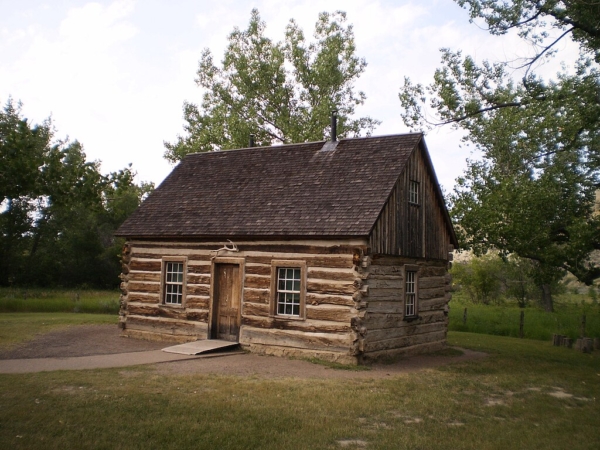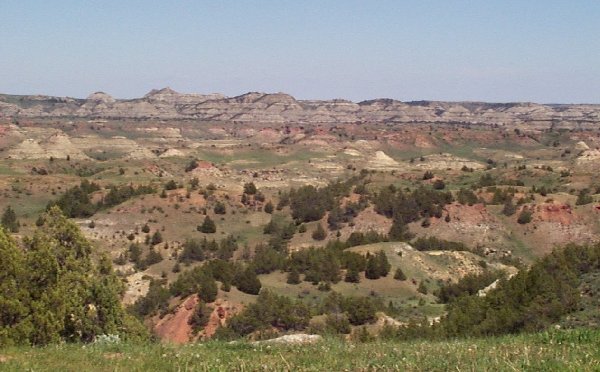Life at Roosevelt’s Elkhorn Ranch in North Dakota
The dry, sand-hued buttes rise from grassy canyons, and sagebrush dots the rugged North Dakota landscape. I am visiting the territory where “the romance” of Theodore Roosevelt’s life began. My renovated 1969 Shasta camper (with wings) navigates the winding roads of the national park named for the 26th U.S. president. It was Roosevelt’s escape to this wilderness in 1884, after the death of his first wife and mother on the same day, that transformed him. In fact, he famously said, “I would not have been President had it not been for my experience in North Dakota.”

The Theodore Roosevelt National Park, which covers 70,446 acres, and its surrounding areas are where Roosevelt rode, hunted, and wrote. He built his Elkhorn Ranch, now a part of the national park, on a remote spot 35 miles north of the town of Medora where he learned cattle-ranching. He also rode horseback across the vast lands hunting elk, mule deer, white-tailed deer, bison, and more. This ranch life defined his experience in North Dakota.
Besides penning his adventures in letters to loved ones back in New York, as well as regaling people with Elkhorn Ranch and Dakota territory stories for the rest of his life, Roosevelt wrote and published more than two dozen books, many of which were about the West, including “Ranch Life and the Hunting Trail” (1888) and “The Wilderness Hunter” (1893).
He described Elkhorn this way: “My home ranch-house stands on the river brink. From the low, long veranda, shaded by leafy cotton-woods, one looks across sand bars and shallows to a strip of meadowland, behind which rises a line of sheer cliffs and grassy plateaus. This veranda is a pleasant place in the summer evenings when a cool breeze stirs along the river and blows in the faces of the tired men, who loll back in their rocking-chairs (what true American does not enjoy a rocking-chair?).”

Roosevelt also expressed, “I grow very fond of this place, and it certainly has a desolate, grim beauty of its own, that has a curious fascination for me.” It was a place and time and life he highly recommended: “I do not believe there ever was any life more attractive to a vigorous young fellow than life on a cattle ranch in those days. It was a fine, healthy life, too; it taught a man self-reliance, hardihood, and the value of instant decision … I enjoyed the life to the full.”
Currently, the 218-acre Elkhorn Ranch site is one of three units of the national park, though some of the adjoining lands are privately owned or managed by the U.S. Forest Service and by the state of North Dakota. While the Elkhorn structures have been lost to time, foundation stones, measuring 30 by 60 feet, are still visible, and visitors can imagine what it must have been like when Roosevelt inhabited the area.
In 2020, historian, author, and director of The Dakota Institute Clay Jenkinson took viewers to Elkhorn Ranch during a Theodore Roosevelt Symposium (viewable on YouTube). While sitting on the existing ranch-house foundation—with crickets chirping loudly all around him—he shared what it must have been like for the New York-born Roosevelt to hear horses whinnying and the “wind fluttering through cottonwoods.”



